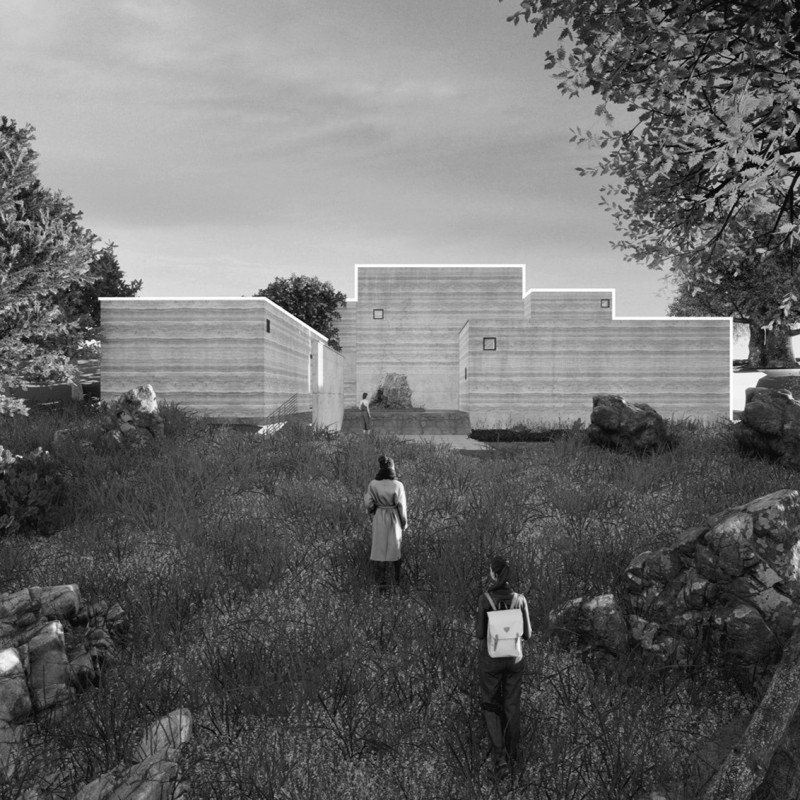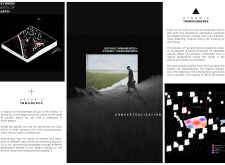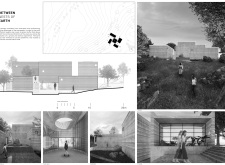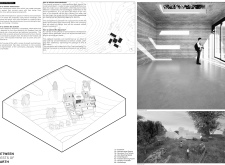5 key facts about this project
The design explores the theme of transcendence, focusing on spaces that promote personal reflection and interaction among community members. Located within a carefully shaped landscape, the spaces are intended to foster connections between individuals and their surroundings. The plan emphasizes simplicity and purpose, addressing the everyday needs of the people who will inhabit these environments while enhancing their living experience.
Spatial Organization
The layout includes distinct areas that serve specific functions, encouraging community engagement. Key components feature multipurpose spaces allowing for various activities, which support dynamic interactions among users. A special Zen meeting space offers a peaceful environment for contemplation and discussion. Workshops designed for skills development provide opportunities for creativity, further enriching community involvement.
Materiality and Sustainability
A unique aspect of the design involves changes in topography, creating levels that guide views and offer privacy. The earth moved during construction is reused as rammed earth walls. This practice showcases a commitment to sustainable design by reducing waste and connecting the buildings to the natural landscape. The result is an environment that feels cohesive with its setting and retains a strong sense of place.
Design Strategies
The architectural approach revolves around four central ideas: achieving immanence, achieving archaic, achieving transcendence, and achieving dynamics. Immanence is reflected in spaces that allow for self-connection and contemplation. The archaic aspect emphasizes essential living, fostering deep relationships without unnecessary details. Forms are crafted to communicate the community's values, ensuring that important stories can be passed down through generations. Dynamic spaces adapt to changing needs, allowing them to grow with the community over time.
Final Design Detail
Communal kitchens and dining areas create welcoming spaces where shared meals strengthen ties among residents. These thoughtfully designed places encourage interaction and social bonding, contributing to a warm and collaborative atmosphere. This focus on community and connection reflects a deeper understanding of how spaces can enhance daily life and build lasting relationships.






















































